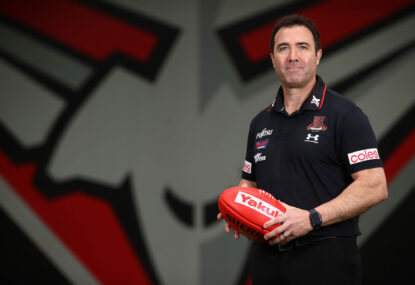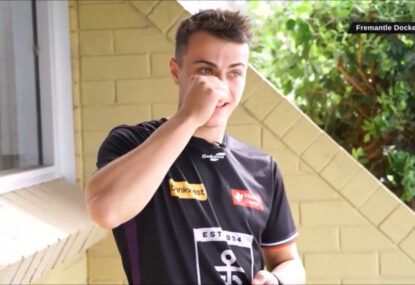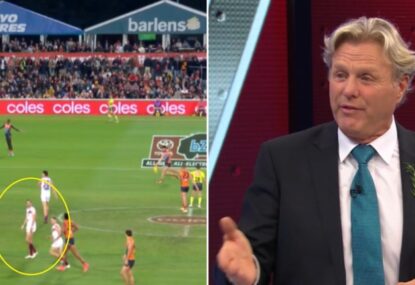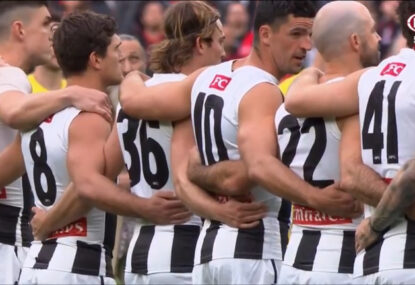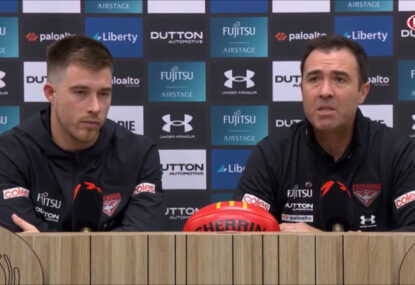If you were going to create a league with parity as your goal, you’d have to go to some great lengths to out-do what the AFLW has accomplished in 2018.
No team has fewer than two losses or two wins in their first six games, and with only one week to go, five of the eight teams can still make the grand final.
Roger Vaughn has already done a nice piece laying out the possibilities for Round 7 in terms of possible championship pairings, so there’s no need to repeat those except to bring up the following: about a year ago, I wrote a piece for this magazine detailing the post-season structures of about a dozen major sports leagues around the world, and determined that the healthiest playoff structure a league can have was one where about 40% of the teams made the post-season, with some sort of home-field or bye advantage for the highest placing teams.
The AFL men do exactly that – 44% of the 18 teams reach finals, and the double chance gives the top two and four significant advantages. So for the eight-team AFLW, a three-team final would be ideal, with teams No. 2 and No. 3 playing for the right to meet the minor premiers in the grand final.
While the AFLW didn’t veer from its two-team final on paper, it’s reassuring to see that on Saturday evening, the de facto semi-final between the Demons and Bulldogs will take place with the winner to host the grand final the following week.
So back on point:
Rather than tell you the possibilities for determining a champion, let’s consider what the result might be if the following occurred…
Brisbane defeats GWS by ten, say, 40-30.
Fremantle and Carlton play to a 300-300 draw (we’re dreaming here to improve their percentages).
Melbourne and Western play to a 275-275 draw (same thing in reverse).
Collingwood defeats Adelaide by one, 31-30.
Isn’t this just about the most parity-ridden ladder you’ve ever seen?
Western Bulldogs 4-2-1 (554/463) 119.7%
Melbourne Demons 4-2-1 (522/482) 108.3%
Brisbane Lions 4-3-0 (224/202) 110.9%
GWS Giants 3-3-1 (230/218) 105.5%
Adelaide Crows 3-3-1 (228/227) 100.4%
Collingwood Magpies 3-4-0 (259/252) 102.8%
Fremantle Dockers 2-4-1 (471/508) 92.7%
Carlton Blues 2-4-1 (425/561) 75.8%
Change just a couple more games into upsets during the season, and this could have been an eight-team finals race all the way to the final round. Say what you want about the level of athleticism or skill – and deal with it, people.
Biologically, female athletes aren’t going to jump as high or kick as far as male athletes, although they still outshine anything I could do on the pitch – but there’s no denying the competitiveness and the effort put forth by AFLW players who are continuing to improve and raise the quality of the game as they do.
I enjoy watching both genders of our league for the same reason I enjoy watching men’s and women’s basketball. They’re two different games, played under similar rules.
Okay, you’ve got me started, so let me finish this argument: if you want to complain about the “quality gap” between men’s and women’s footy (or any other comparable sport – football, hockey, whatever), tell me why you would still watch youth sports.
Or the Paralympics.
Or any other sporting event which doesn’t involve the very best athletes in the world in that sport.
Enjoy the AFLW for what it is: a competitive league in the sport we love, with athletes we’ve come to know and admire and care about.
For the record, our ELO ratings and I both see the Bulldogs winning the minor premiership Saturday night, and GWS’s win that afternoon being the deciding factor in making them the visiting team (at 4-2-1) the following week in the grand final.
Change of topic – I haven’t touched on the meta-player of the year award recently. Readers of my columns know I gather votes from as many diverse knowledgeable sources as I can and combine them into one overall “meta-award”, and with some of the votes still out for Round 6, here are the current standings for, let’s say, five-and-a-half rounds…
1. Chelsea Randall, Adelaide – 129 points
2. Emma Kearney, WB – 127 points
3. Daisy Pearce, Melbourne – 122 points
4. Kate Lutkins, Brisbane – 119 points
5. Elle Blackburn, WB – 113 points
6. Courtney Gum, GWS – 101 points
7. Elise O’Dea, Melbourne – 97 points
8. Alicia Eva, GWS – 89 points
9. Chloe Molloy, Collingwood – 86 points
10. Ebony Marinoff, Adelaide – 85 points
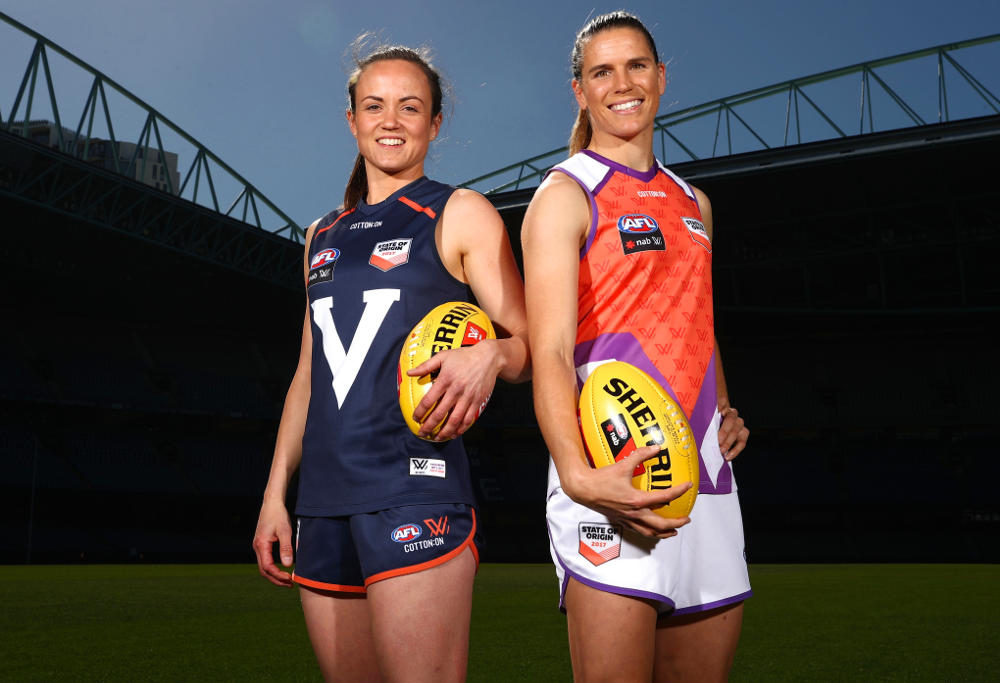
(Photo by Scott Barbour/AFL Media/Getty Images)
Six teams are represented here. Carlton’s leading vote-getter is still Brianna Davey at 62 points, although Tayla Harris is at 45 as we speak and could still pass her; and Fremantle’s fairest is Kara Donnellan, who has 79 points and is in twelfth place overall.
Not surprisingly, the Bulldogs and Demons lead the overall vote count, with the Lions just behind and Carlton pulling up the spoon in this department as well. Also not a huge shock, Emma Kearney leads the league in “dominant” performances through five rounds – a dominant performance being one which receives recognition or votes from at least 90% of our sources in a round.
Round 3, 4 and 5 were all such games for Kearney, and Round 2 was a “prominent” performance, denoting a player earning recognition from 80% or more of our sources. Pearce, Lutkins, and Gum are right behind her on this table as well.
Next week: our preview of the AFLW grand final and all of your predictions gathered into one grand “meta-forecast” for the 2018 AFL men’s season.































































































